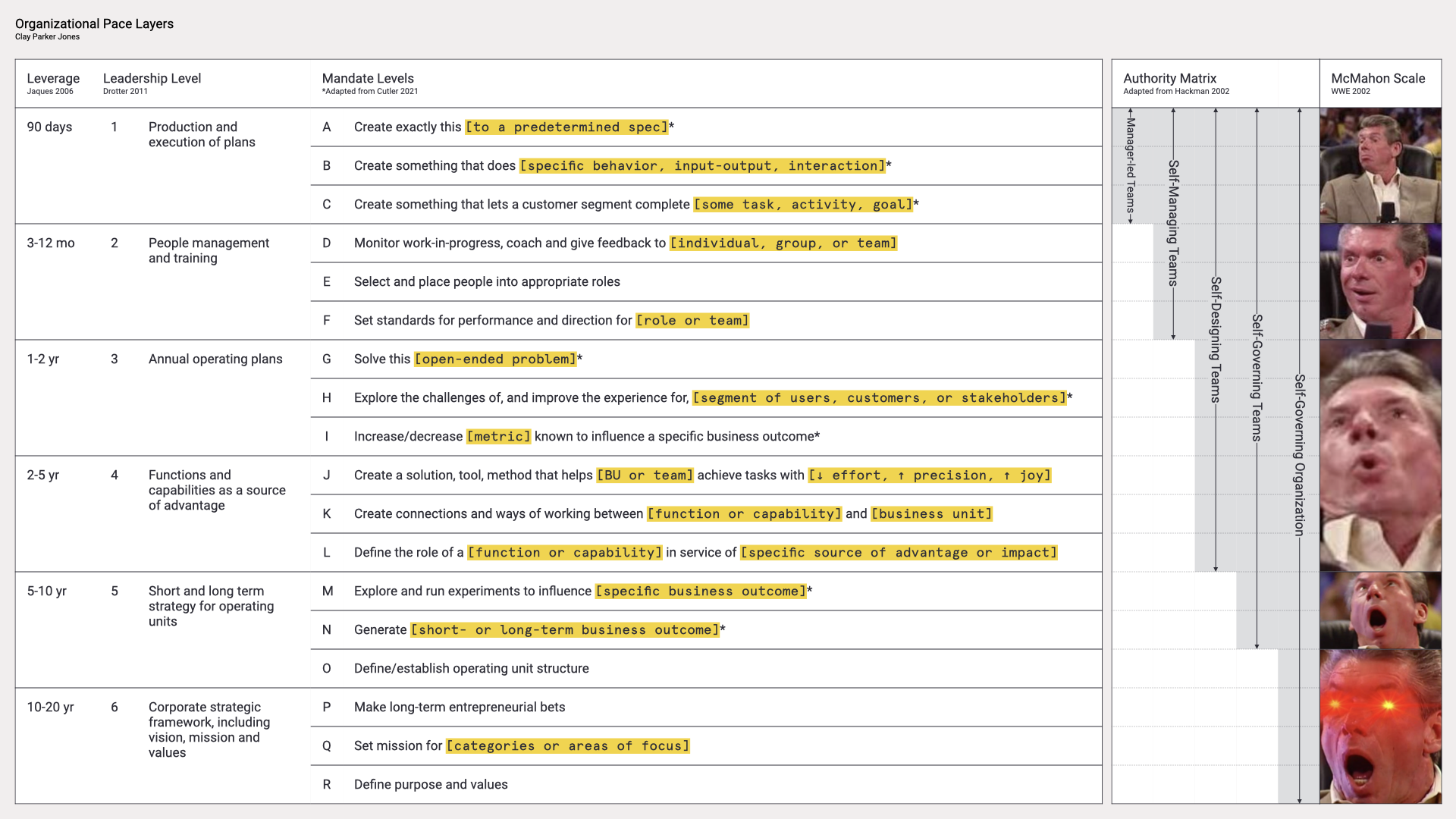
Saved by Adam Zeiner
Pace Layers for Organization

Saved by Adam Zeiner
Austin Robey added
Juan Orbea added


The fast parts learn, propose, and absorb shocks; the slow parts remember, integrate, and constrain. The fast parts get all the attention. The slow parts have all the power. This raises the question, What is the pace layering of learners? What can change quickly, and what changes more slowly?
Architectures drive technologies, which drive skill sets. While we'd love for every team to be a full stack team that can work on any layer of the architecture, in practice that's often not an option.
Britt Gage and added